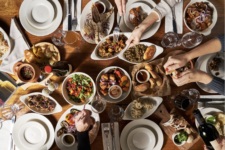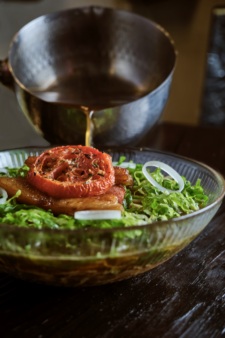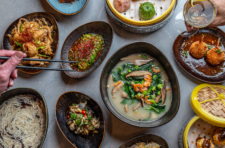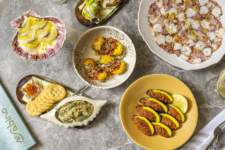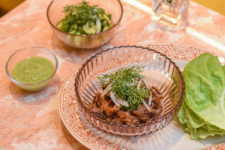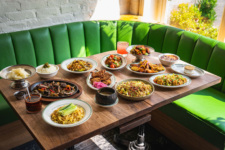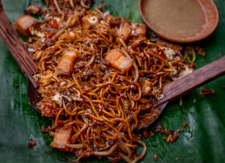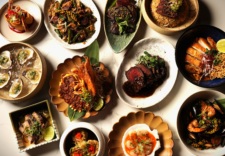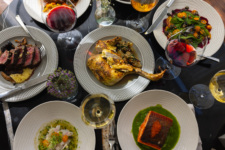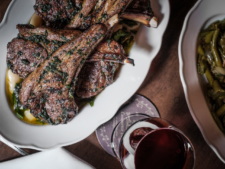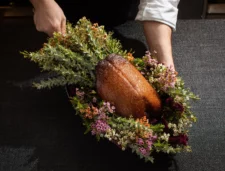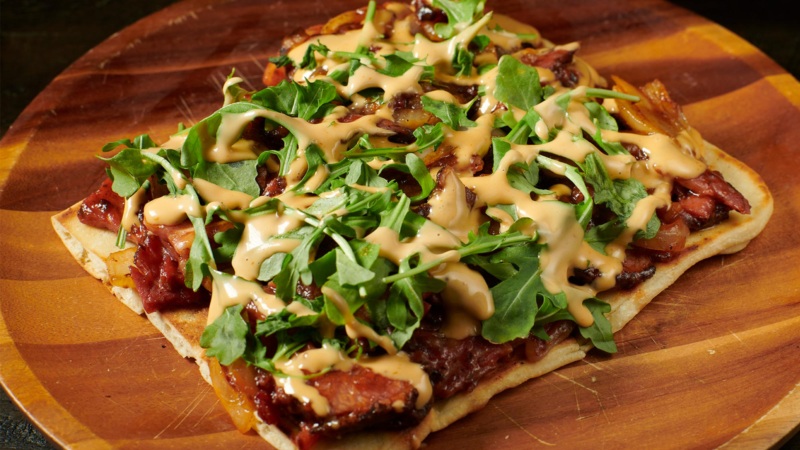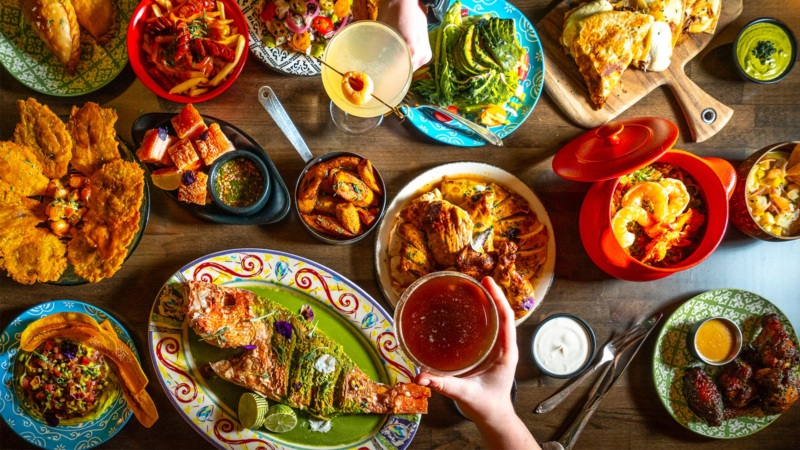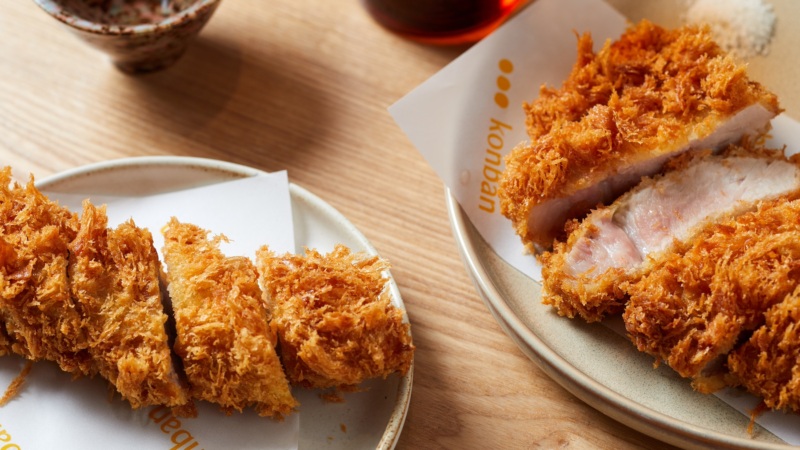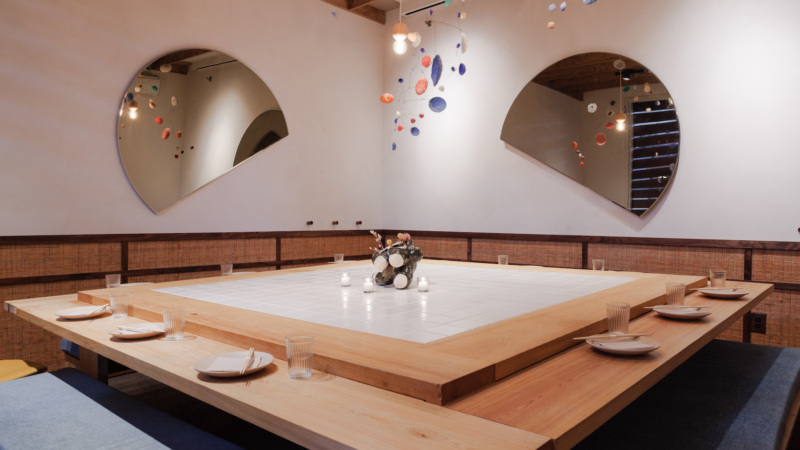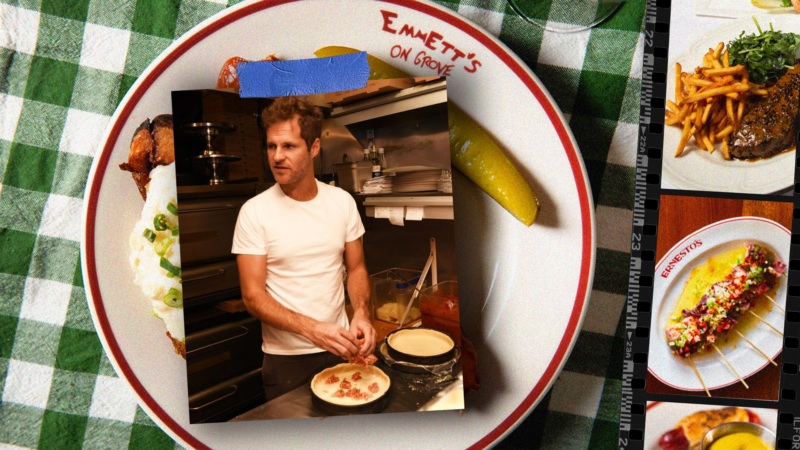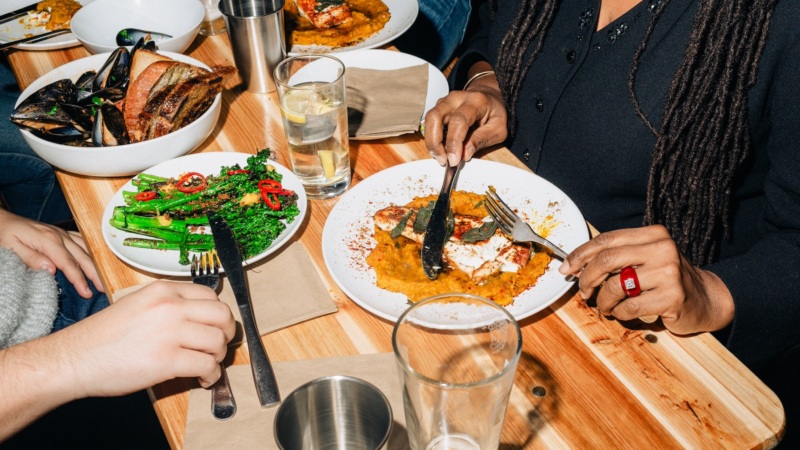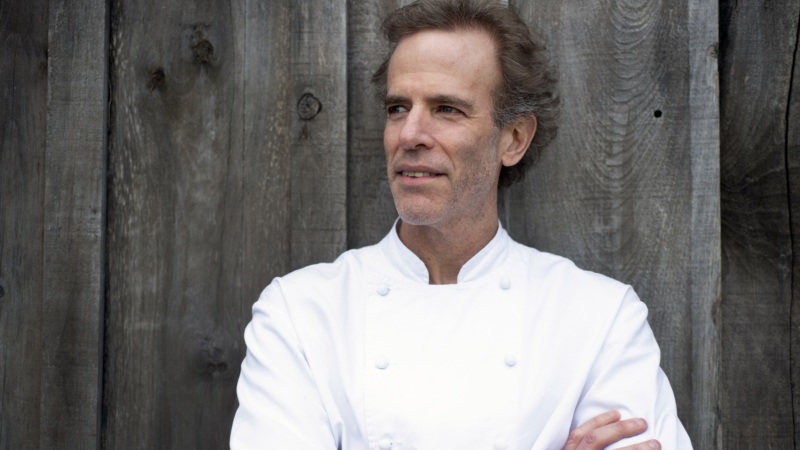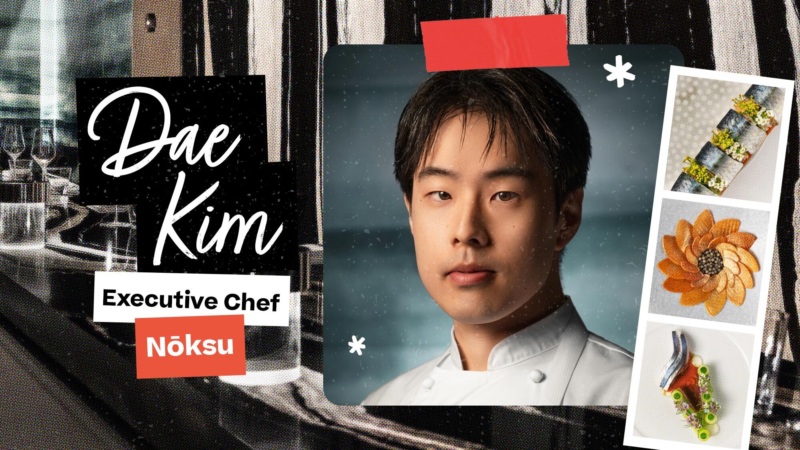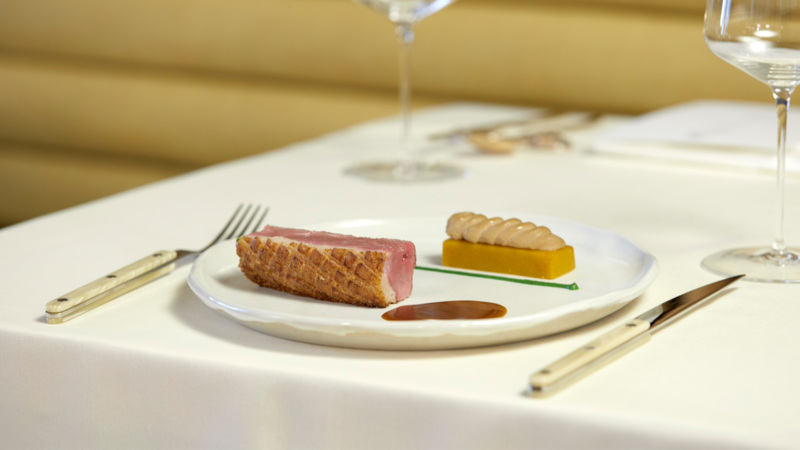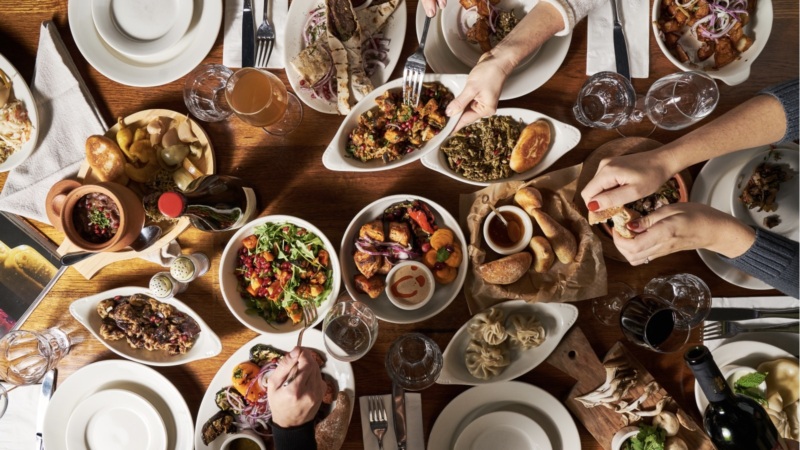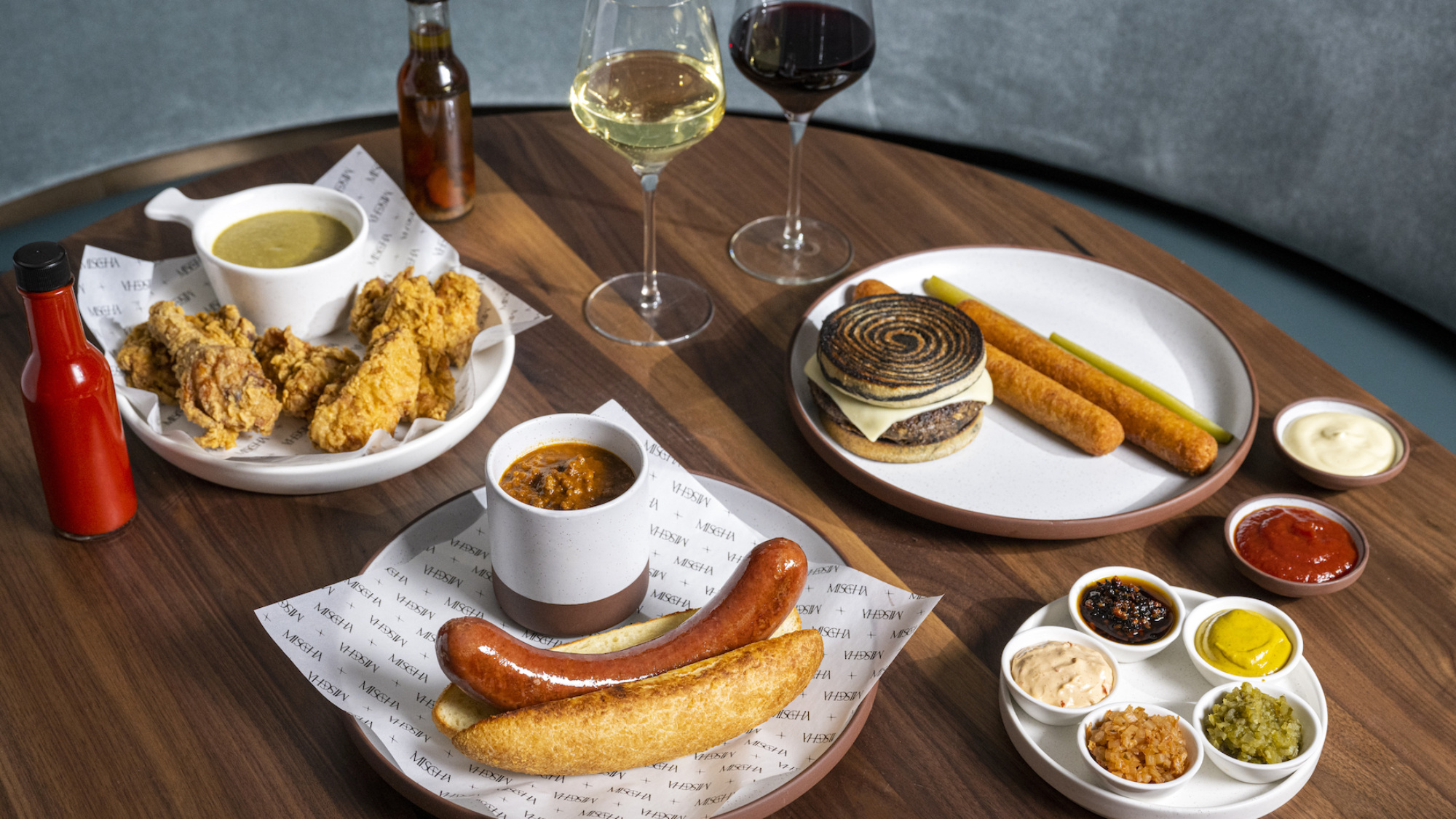
How Alex Stupak Redefines New American Cuisine at Mischa
For the last 16 years, chef Alex Stupak has been associated with two things in New York: Mexican food and pastries. But with his latest restaurant, Mischa, he is hoping to avoid being pigeon-holed any longer.
Stupak started cooking back in high school in Massachusetts, before he rose in the ranks as a pastry chef at various restaurants in Boston and Chicago.
“Somewhere in Boston, I kind of weaseled my way into my first ever pastry position,” he recalls. “I had never studied pastry, ever. In my spare time, I had become obsessed with Albert Adrià and what he was doing at El Bulli, and I basically just BS’d my way into my first pastry chef job. I ended up parlaying that into a second pastry chef job at Clio under Ken Oringer, and then I was able to parlay that into the job as a pastry chef at Alinea in Chicago.”
After a year-and-a-half, Stupak was ready to move to New York. “Being the weird type of pastry chef that I was, it was really obvious there was only one restaurant in New York City that would ever accept my work, and that was WD-50. So I wrote Wylie [Dufresne] a letter, and I just said, ‘Hey, I know you have a great pastry chef, but if anything ever changes, give me a call.’ And then one day, he did.”
Stupak quickly became known in the city for his gastronomic and creative desserts, but all the while he was nurturing an obsession with Mexican food. Eventually, he opened the first Empellón, which has added and lost locations through the years, and had various spin-offs. Currently, there are four locations and they’re all slightly different (except for two locations of Empellón Taqueria), and they vary in degrees from casual to fine dining, but all serve Mexican food.
And to those who wonder, why Mexican? “I believe in my heart and soul if I had just left WD-50 and opened a French place, no one would go, ‘Why French?’ It comes down to white people food and not-white-people food, and how people perceive those things.”
So how did Stupak go from making pastries to cooking Mexican food to opening Mischa? And what is Mischa all about, anyway?

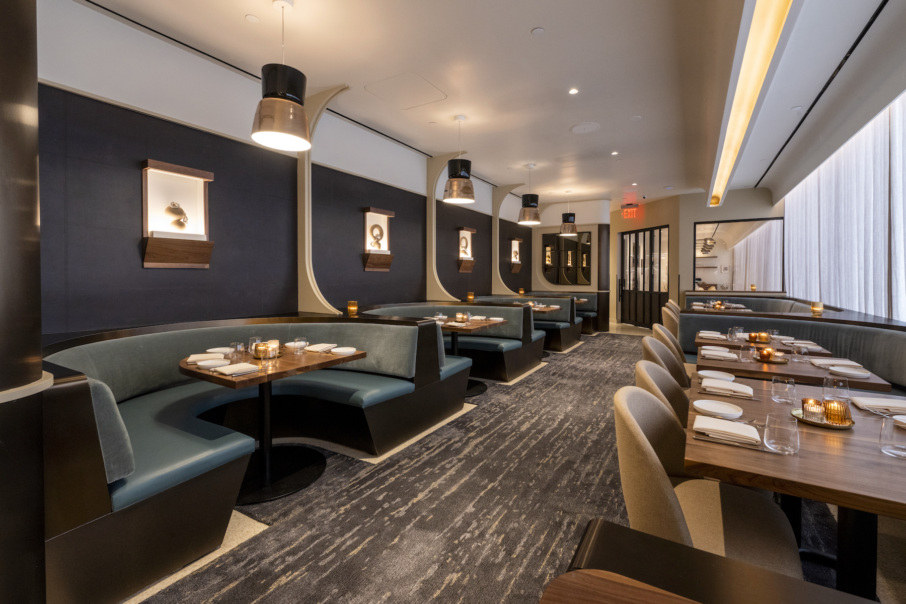
“I’m interested in many things, and I’m looking at a diverse group of people who are interested in many things. So how do you build a new container to hold another set of ideas? Because there’s limitations to a brand, which I’ve learned the hard way,” says Stupak. “I thought, if I never get an opportunity to do another new concept again — if it’s only Empellón and this new thing — how can I make this new thing almost contain everything I’m interested in cooking?”
For Stupak, fitting Mischa into the “American” restaurant label was the answer. “I hate the labeling of things, but you’re forced to do it. I liked “American” because I think it encompasses everything — or it should encompass everything, or most things — but when you look at everything that calls itself American, or new American, they don’t actually encompass America,” says Stupak. “I immediately liked that, because right there, there was a fight to make an approachable, agreeable restaurant, yet circumvent every cliché that’s on every menu in New York City. So, there’s a project that becomes really exciting.”
Mischa opened in April 2023 in a somewhat odd Midtown building that used to be home to a Barnes & Noble, Sports Authority, and an objectively sad food court. It has since been remade to house the much-nicer food hall, The Hugh, with Mischa sitting upstairs in an L-shaped mezzanine space overlooking an array of glass lighting above the food hall. It’s bright and airy, with natural light streaming in from the front windows of the food hall, and whimsical artwork on the walls.
To Stupak, being American really means being from all over, and the menu at Mischa reflects that. But he’s also hoping to give people something unexpected. “I have no problem with French food, Italian food, or Japanese food. I just think they are immediately everyone’s favorite in New York City,” says Stupak. “So, we strive to not have those things on the menu. Korean people are American, Ethiopian people are American, Nigerian people are American, Georgian people are American, Russian people, Ukrainian people, and all those flavors are fascinating.” Some dishes relate to his personal family, but most don’t.
Here, he explains five signature dishes from the menu, in his own words.

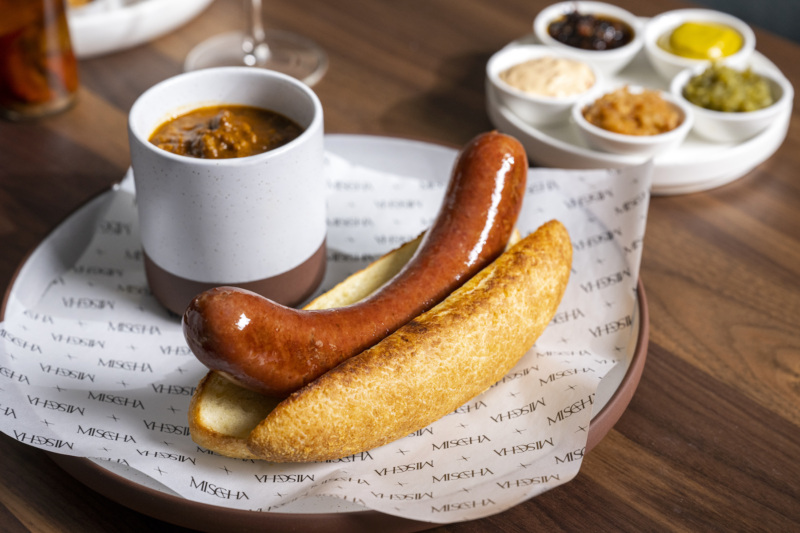
1. Hot Dog
“Part of the puzzle of our menu was how do you give people the thing [they want], without giving them that thing? Probably the most quintessential American food is the cheeseburger, so how do I give them that without giving them that? If the burger is the most American food, ground beef is surely the most American ingredient. So, can the hamburger actually be a hot dog, where the ground beef manifests in a different way?
“And I just love that, because first of all, whether it matters or not, hot dogs predate burgers in the United States. Second thing, is that, look, New York City is still a pizza town. It’s still a sushi town. It’s still a pasta town. It used to be a hot dog town and I think that’s dying. I feel like I see a lot of Gray’s Papaya’s turning into Liquiterias, which is depressing. So the thing that’s gonna be on every goddamn table, could it not be a burger? Could it be a hot dog? It’s coming from an intellectual place, it’s not coming from some shock factor. It’s more, ‘How can the American restaurant grapple with this in a new way in a creative way?’
“We take dry-aged brisket, we grind it and emulsify it in house, and it goes into a natural hot dog casing. It’s smoked for six hours. Our bun is made in-house by our pastry chef Justin Binnie. It’s a potato roll, and it’s super soft, but it’s encrusted on the outside with instant mashed potato flakes, which give it this amazing crust. But it’s just a hot dog on the bun because the way burger experts will talk about burgers, is that just the patty on the bun without cheese needs to be great. So that’s how I wanted to judge it. It comes with a sidecar of dried chili and another sidecar of five different condiments. Condiments are important in American cooking, I think we like our condiments. So, we make a yellow mustard — ours just happens to be dyed yellow with tagetes [marigold] flowers from Georgia. And we make our own lacto-fermented pickle relish, and then there’s a bacon and habanero chile crisp. There is kimchi — we liked kimchi better than sauerkraut — and we’re kind of making the silent argument that kimchi is eaten more in New York than sauerkraut at this point. The fifth is pimento cheese flavored with aji dulce chiles. I like the chili in combination with the pimento cheese the best.”

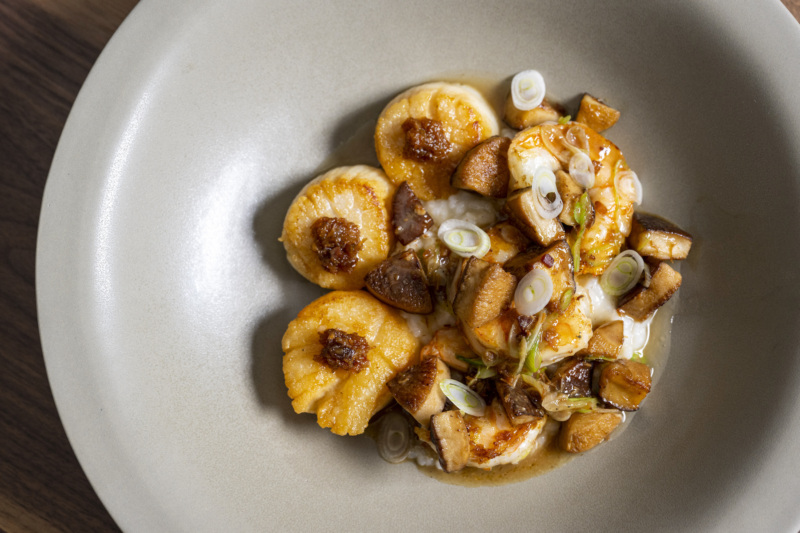
2. Seared Scallops
“We wanted to look at regional American food, but also the mind-map around it. We were looking at shrimp and grits, because I’ve never gotten to cook that before professionally. So, I’m like, ‘I’ve never made this before, but I know you’re supposed to go to Anson Mills and buy grits.’ So, I go to Anson Mills’ website and they have grits but they also have something called rice grits. I was like, ‘Well, I’ve never heard of that. That’s interesting.’ So, I bought those as well.
“I made those, and I’m like, ‘Well this is just congee.’ So I looked at it, and everything else in shrimp and grits. I got some ham in there, I have alliums, I was like, ‘If I add scallop to the shrimp, now I have shrimp and scallop, which means I can then take dried scallop and dried shrimp which are in XO sauce, which contains that same country ham. And that all becomes like a logical, mash up dish. I don’t like willy nilly fusion, but I like it when there’s a through line that allows you to mind-map to something new.”
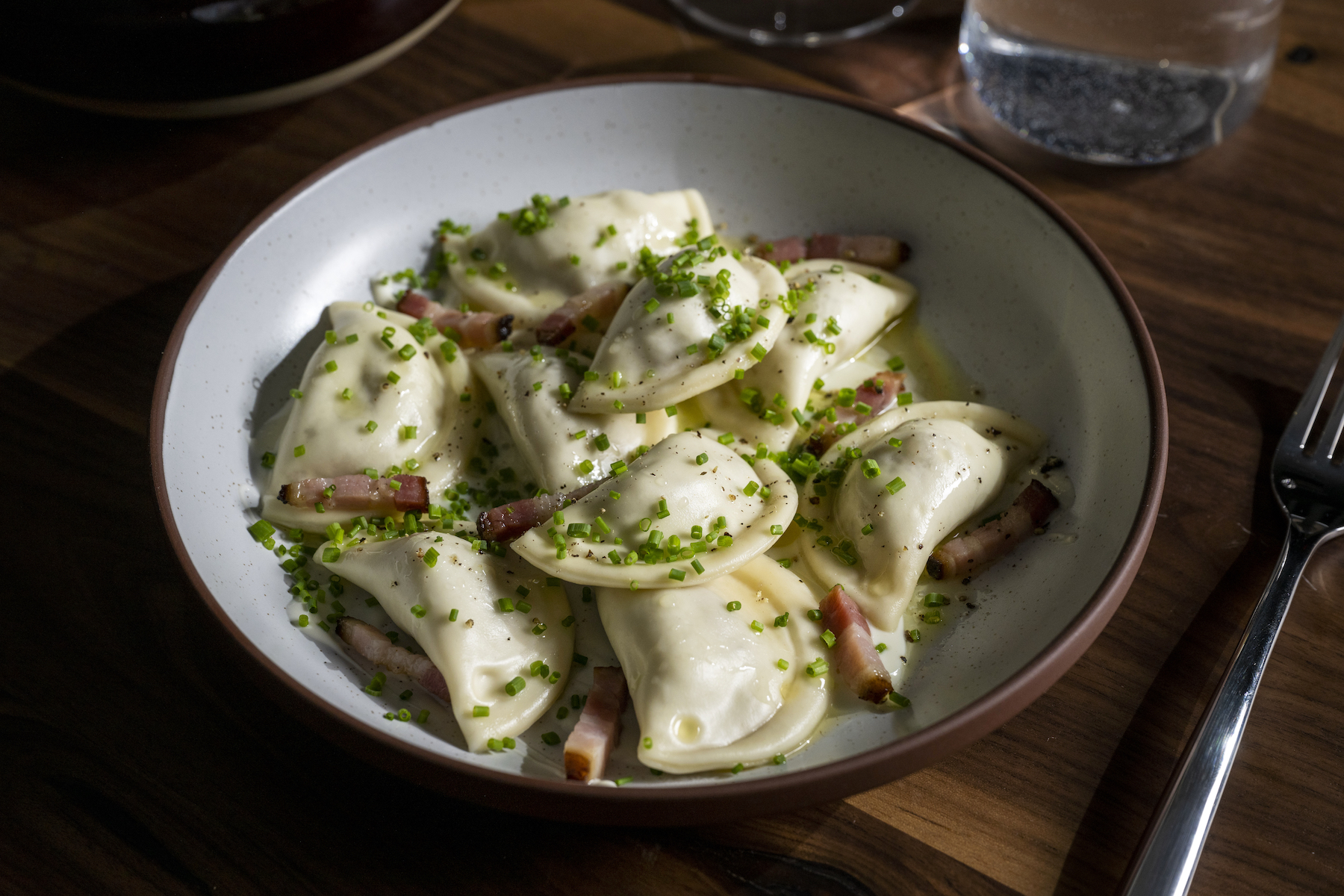

3. Apple Vareniky
“Apple vareniky is something my dad would cook for me growing up. My dad is part Ukrainian and his dad was Ukrainian. He died at a young age and my father often felt regretful of being disconnected from his family and his heritage. But he had these memories of his aunts on a farm in Pennsylvania who were picking blueberries from their own yard and making vareniky.
“I don’t have a rich, deep, robust culinary heritage. But in doing a restaurant where I said could cook almost anything, I was like, ‘Are there any opportunities I could take?’ But I don’t make my dad’s vareniky, I make my own brand. I like how, anytime, fruit can be an appetizer. It’s a hard thing to pull off, but I think it’s a very sophisticated, lovely idea for some reason, I can’t explain it. I also like the ambiguity of sweet and savory, and where it belongs. And what I really love is the idea of building a pasta section to the menu that didn’t have Italian food in it.
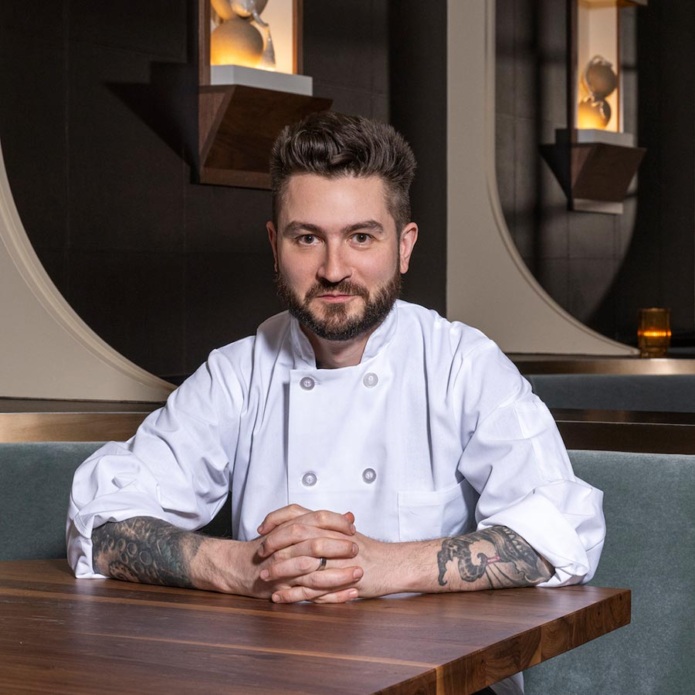
I want to cook for the masses, but I also want to cook for chefs. And I want to cook for critics.— Alex Stupak
“Ours are filled with grated Granny Smith apples that have been cooked down with apple cider and are served with sour cream and melted butter. We also atypically put some thin slices of salt pork on it. The dish started as a pork chop and applesauce dish, where I was like, the vareniky are going to be filled with an applesauce of sorts. But the pork chop was very uninteresting, but we still like the pork and applesauce connection. So, we cure our own salt pork with Cassia bark, slice it thin, and put that on top of the pasta.”
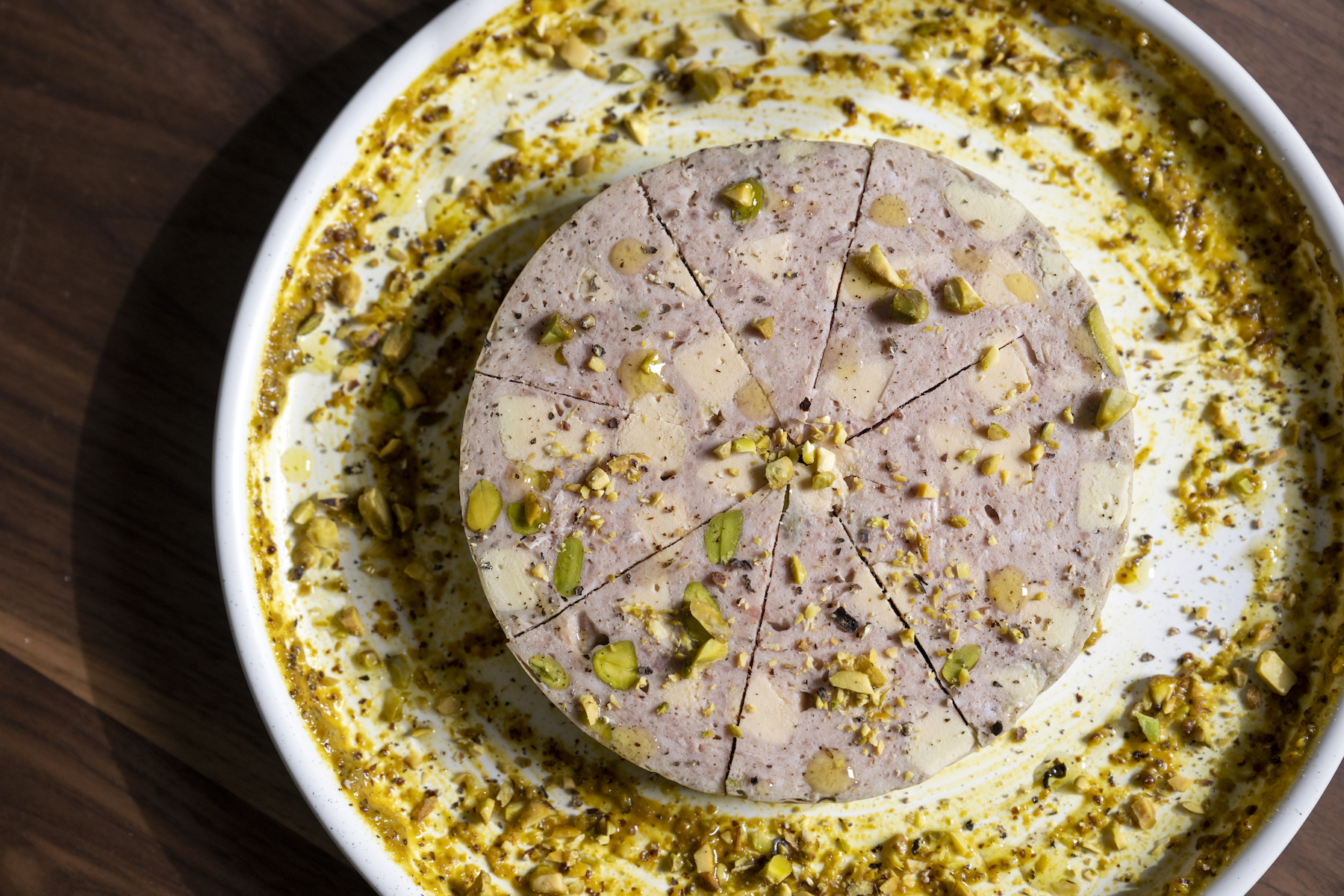
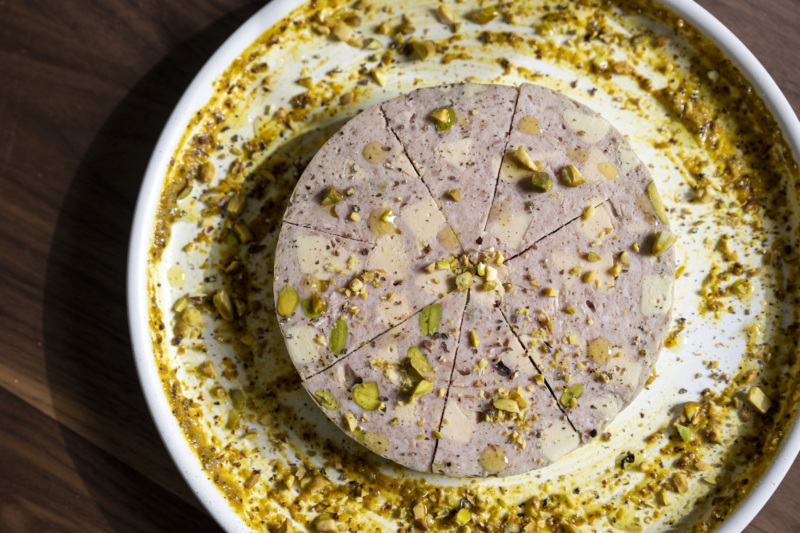
4. Duck and Foie Gras Mortadella
“This was one of those ones where you wouldn’t know how to pull off a dish like this unless you did work at WD-50. And those sorts of subtle technical tricks are always super exciting for me. We’re replacing pork meat with duck meat, but then, the fat back that typically gets diced in the sausage is replaced with chunks of foie gras terrine. And you wouldn’t know this unless you work with those types of products, but being able to poach a huge sausage for six hours and not have it render out the foie gras, you got to use the Dark Side of the Force for that. You have to break the foie gras and re-emulsify it with a whole cocktail of hydrocolloids, different gums, and emulsifying agents. Then you just see chunks of foie gras floating in a duck sausage, instead of chunks of fat back floating in a pork sausage. It’s served with a mustard that’s been sweetened with date molasses, and it gets these crackers on the side that are made with duck fat and whole wheat flour and a little bit of honey.
“I think it’s important that you have those technically aggressive, cheffy things — you are cooking for other chefs, too. I think that that’s an important element to preserve for me personally. I want to cook for the masses, but I also want to cook for chefs. And I want to cook for critics. I do. People say, ‘Oh, I hate it. Blah, blah, blah.’ But you can avoid it all if you really want to.”
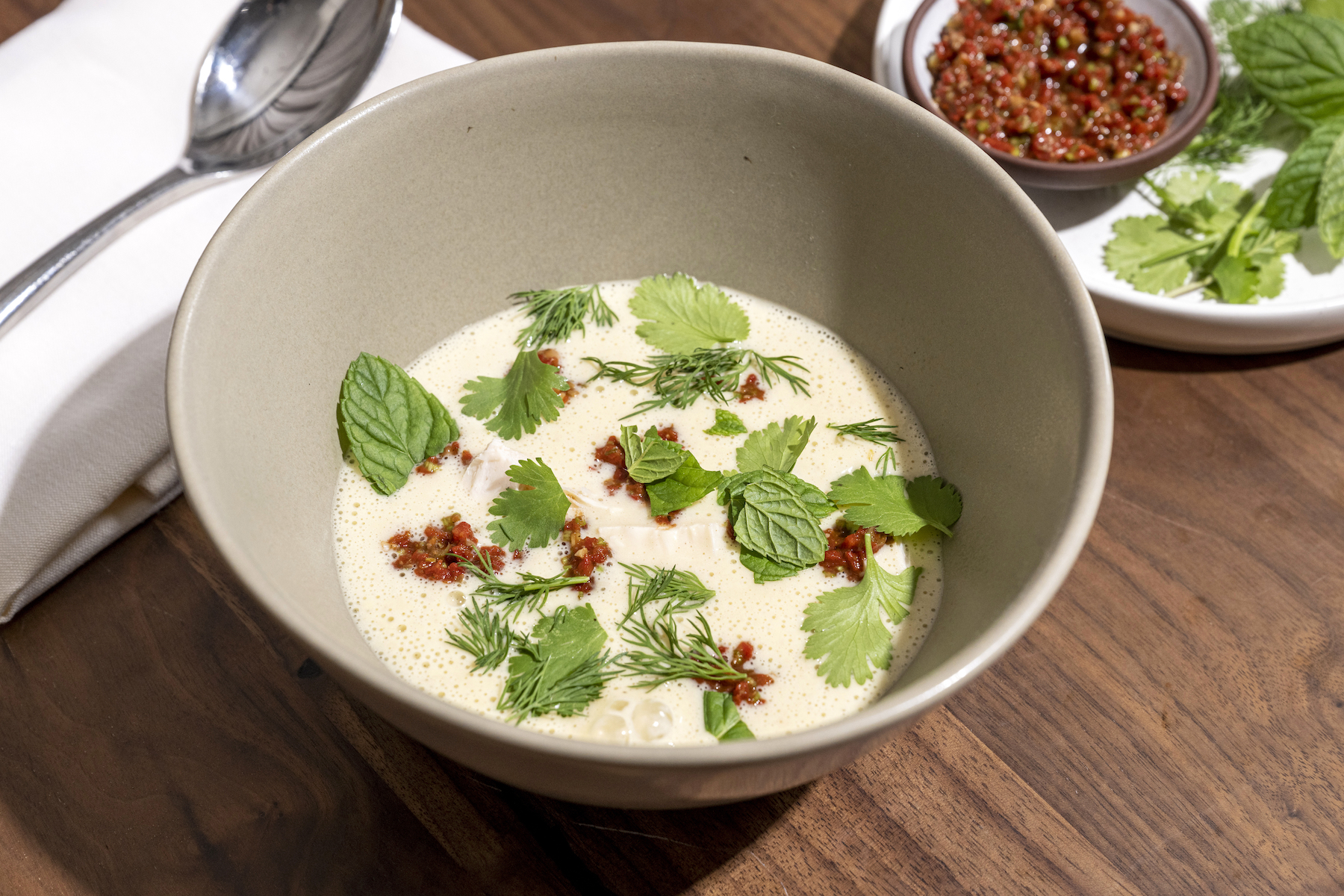
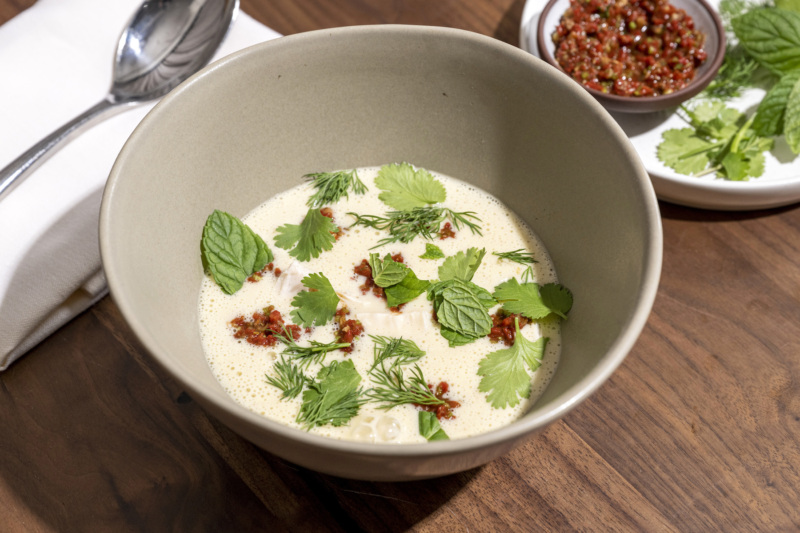
5. Chikhirtma
“The Chikhirtma is from the lunch menu. It’s a chicken soup from Georgia that’s enriched with egg yolk and lemon juice. It’s served with a side of red adjika, which is a spicy, chili-based condiment, and some fresh herbs to tear into it.
“What’s important about the dish is less the dish and more the idea of something we’re going to do at lunch. I really liked the idea that every culture has chicken soup. So, what if chicken soup was always on the menu, but it changed country every month, forever. I just liked that idea. So right now we’re running the Chikhirtma for June. But in July it’ll be dak kalguksu — a Korean chicken noodle soup — and then so on and so forth. And not to sound too cheesy or philosophical, but I’m more interested in our similarities than our differences. It’s like, wow, you thought to make chicken soup taste like that. And a lot of people thought to make it tastes like that. But underneath it, we all make chicken soup. Just like underneath our skin, we’re all skeletons.”
Mischa is open Monday through Friday from 11:30 a.m. to 3 p.m. for lunch and from 5 to 10 p.m. for dinner, and on Saturday it’s open from 5 to 10 p.m. The restaurant offers a happy hour menu at the bar from 3 to 6 p.m. on weekdays.
Devorah Lev-Tov is a food, beverage, and travel journalist with bylines in The New York Times, Food & Wine, Bon Appetit, Eater, Vogue, and more. She lives in Brooklyn with her husband, two children, and senior shih-tzu. Follow her dining adventures (usually at a reasonable hour) on Instagram. Follow Resy, too.




